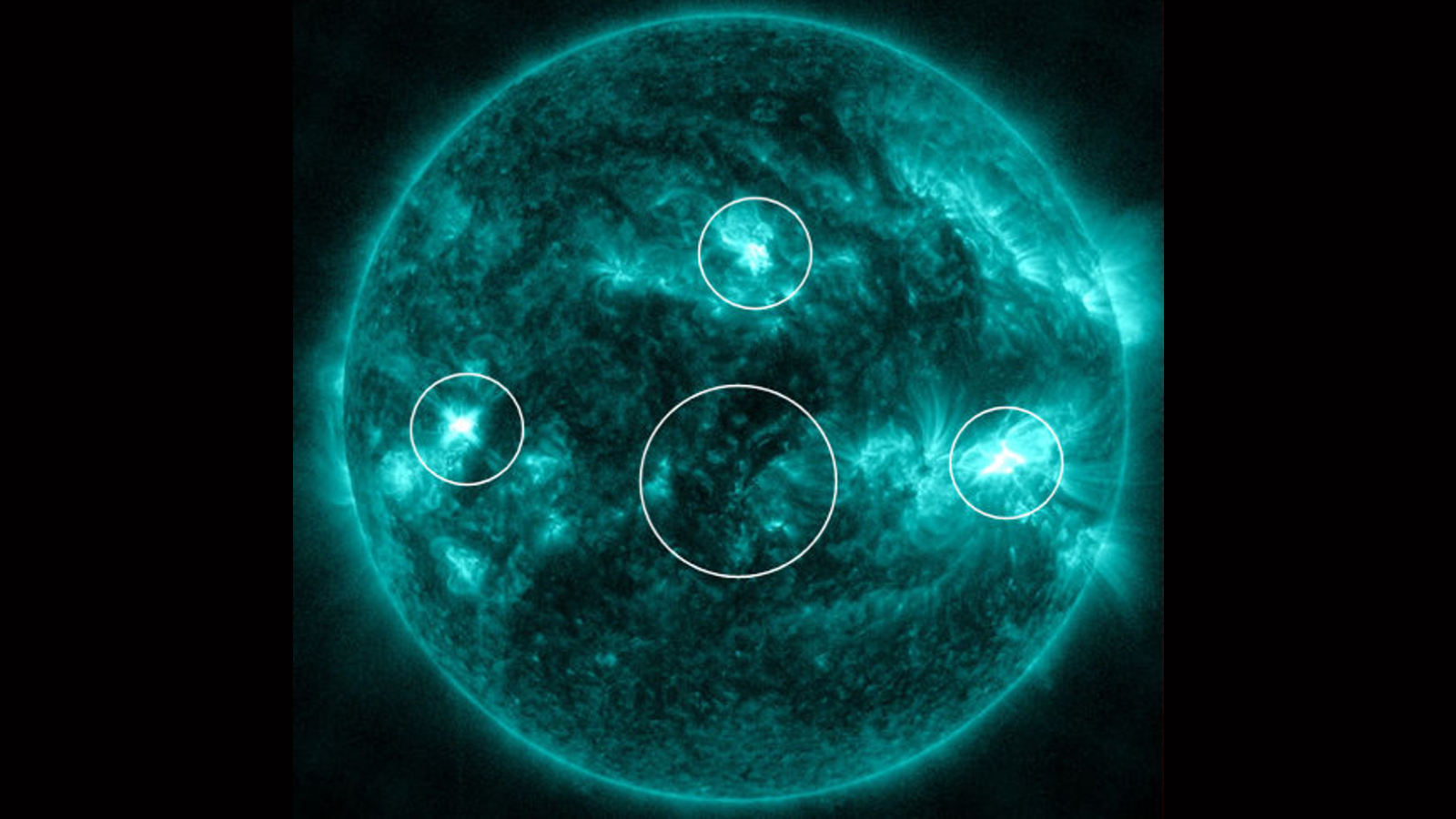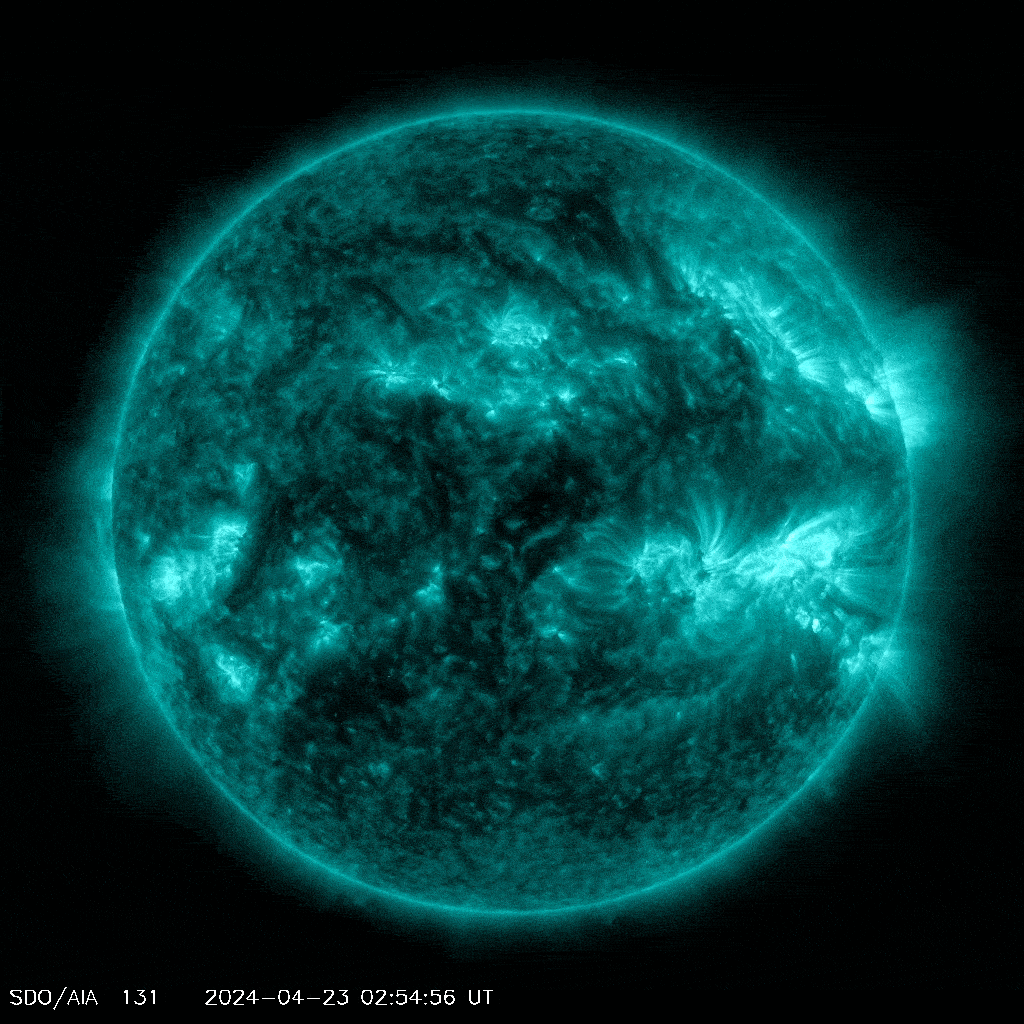
An exceptionally rare, "quadruple" solar flare just exploded from four different points across the sun's surface at almost the exact same time. The components of this interconnected, explosive tetrad may have also launched a solar storm toward Earth — which could potentially slam into our planet in the coming days.
The four-part eruption began at around 1:00 a.m. EDT on Tuesday (April 23), according to video footage captured by NASA's Solar Dynamics Observatory. The near-simultaneous outbursts came from three sunspots and a large magnetic filament — a large loop of plasma suspended above the solar surface — located in between those three dark patches, Spaceweather.com reported. The blast sites were each separated by hundreds of thousands of miles, and the area between them covered around a third of the solar surface facing Earth.
The concurrent blasts were part of one single eruption, known as a sympathetic solar flare. This type of solar outburst happens when sunspots or filaments are invisibly linked by massive magnetic field loops that arch above the solar surface. When one detonates, the others quickly follow suit.
In almost all reported cases of such events, sympathetic flares include just two linked flares, which can range in intensity from small outbursts to X-class flares, the most powerful class of solar flares the sun can produce. However, in this case, there were twice as many flares as usual, which makes this a "super-sympathetic" flare, according to Spaceweather.com.
It is currently unclear what the combined power of the blast was. But given the large area covered by the sunspots, there is a decent chance that "at least some of the debris will be Earth-directed," Spaceweather.com reported. This debris would most likely be a massive cloud of plasma and radiation launched by one of the flares, known as a coronal mass ejection (CME). If confirmed, a CME could smash into our planet in the next few days and trigger vibrant auroras near its magnetic poles.

This is at least the third sympathetic solar flare of 2024 following a pair of explosions in January and an X-class flare duo in March.
Sympathetic solar flares are more likely to occur during or around solar maximum, the most active phase of the sun's roughly 11-year solar cycle, according to a 2022 study that analyzed nearly 40 years of solar flare data. Some researchers believe this explosive peak may have already begun, around a year earlier than initially forecast.
In addition to ushering in more frequent and powerful solar storms, the solar maximum also comes with an increase in the number of sunspots littered across the sun. At the start of Tuesday, there were 14 sunspot groups on the sun's near side — tying the record for the highest sunspot total since the start of the current solar cycle in 2019, EarthSky reported.







